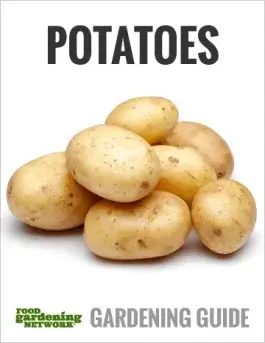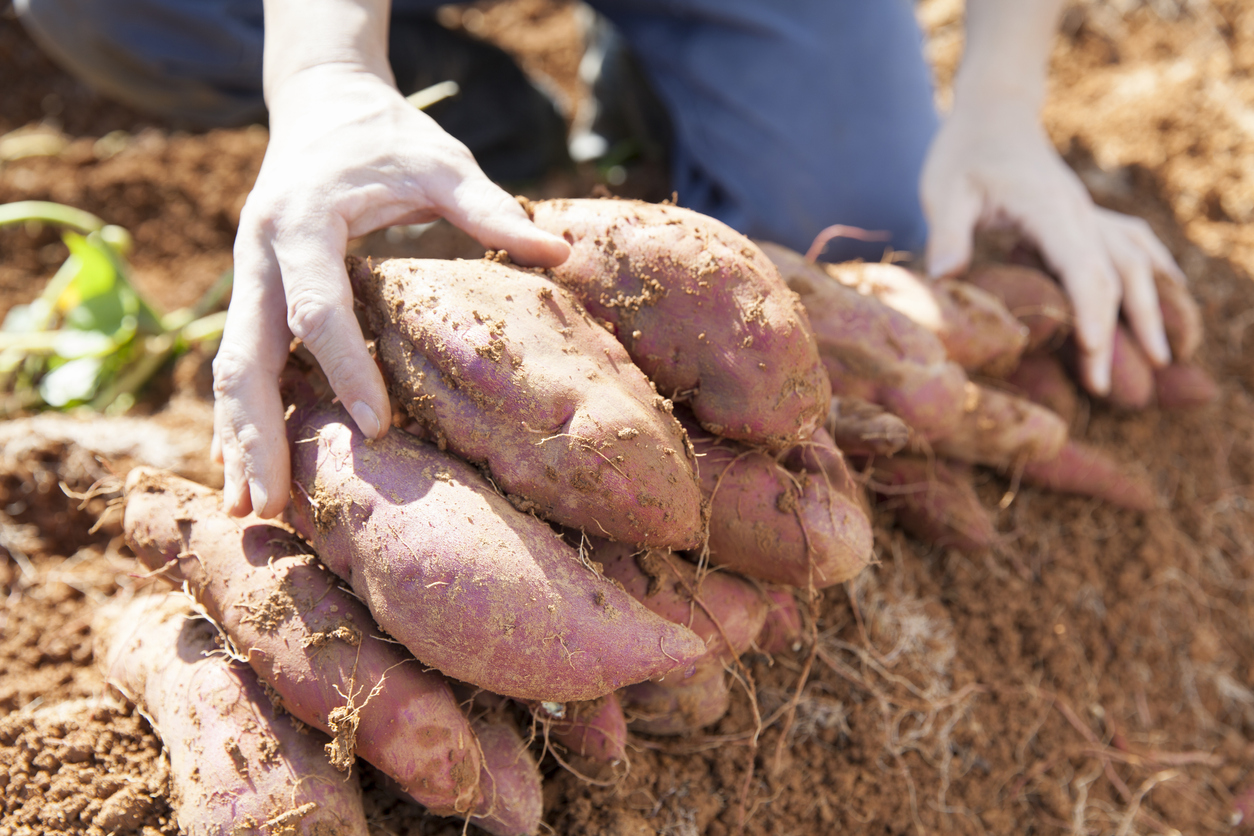
You can find them in the fanciest restaurants and next to a burger at your local diner. They’re a staple crop around the world, and they can grow just about anywhere. In fact, we produce around 600 billion pounds of them every year. But they do sometimes need some help. That’s why potato and sweet potato companion plants can be just as important in your garden as the potato itself.
And in case you’re wondering, yes, potatoes and sweet potatoes are indeed unrelated. Potatoes are tubers from the nightshade family, related to the pepper, tomato, eggplant, and tomatillo; sweet potatoes are roots whose closest cousin is the morning glory.
We’re bending the rules a little here, since we so often categorize potatoes as root vegetables, and since they can be bothered by some of the same pests. That’s why these potato and sweet potato companion plants are good additions, whether you grow potatoes, sweet potatoes, or both!

Harvesting sweet potatoes
10 potato and sweet potato companion plants that belong in your garden
Beans. Beans increase the levels of nitrogen in the soil, which helps potatoes yield more.
Catmint. Not only is catmint indestructible, but it is also rumored to deter the potato beetle.
Chives. You just know we had to put chives on the list of potato companion plants. What’s better than fresh chives sprinkled on top of a hot baked potato? Chives also attract beneficial insects and deter several destructive pests, including rabbits.
Garlic. Garlic mashed potatoes, anyone? Garlic’s pungent odor wards off everything from Japanese beetles to whiteflies to vampires. Plus, it’s about the easiest plant in the world to grow.
Horseradish. Horseradish, along with catmint, is one of the few potato companion plants that may deter the Colorado potato beetle. Just be aware that horseradish can spread rapidly, so make sure it has plenty of space.
Marigolds. These bright yellow, orange, and red flowers aren’t just eye candy for your garden. They attract predatory insects, like ladybugs, that feed on aphids and other pests. The limonene in marigolds can help deter whiteflies and their roots secrete chemicals that kill nematodes.
Peas. Like beans, peas and other legumes add nitrogen to the soil, helping potatoes grow healthy and abundantly.
Radishes. Radishes grow quickly and have shallow roots, so they make a nice complement to slower-growing potatoes. They also repel flea beetles.
Summer Savory. You may know this aromatic herb best as a member of the Herbes de Provence blend. Its peppery flavor most closely resembles thyme and the herb is believed to have natural antiseptic properties. In the garden, however, summer savory works well near sweet potatoes thanks to the fact that it can deter the sweet potato weevil.
Thyme. Thyme has a lot going for it. This perennial herb is easy to grow and it doubles as ground cover and weed control. Like summer savory, thyme may also repel the sweet potato weevil.
Even with these potato companion plants, you may still end up with unwanted pests. The best approach to protecting your potatoes is to spot the pests and pick them off, one by one. Colorado potato beetles and aphids are common potato pests. Other pests include the cutworm, which can chew holes in your plants; and white grubs and wireworms, which drill into potato seed pieces and tubers.
Sweet potato weevils damage the vines and leaves of the plant. Adult weevils can bore into the roots. Roots in which weevils have deposited eggs are doomed: the roots respond by producing toxic terpenes, rendering the sweet potato inedible. There’s no cure for a weevil infestation. Crop rotation can help, as can hilling up the soil around the base of the plants. Ants and spiders are natural enemies of the weevil, so pay attention to your local ecosystem; support your local spider!
Oh! One last thing. There are some other vegetables and plants that do NOT make good potato companion plants. Be sure to leave plenty of space between potatoes and any of these plants you may have in your garden.
- asparagus
- Brassicas (broccoli, cabbage)
- carrots
- cucumber
- kohlrabi
- melons
- parsnips
- rutabaga
- squash
- sunflower
- tomatoes
- turnips
With a little planning, you can enjoy a garden where all the plants play well together.
Want to learn more about these delicious garden treats? With the Potatoes Gardening Guide, you’ll have everything you need to know about growing and enjoying these world-famous veggies. Starting with the history and background of potatoes and sweet potatoes to hands-on advice on growing it … from planting techniques to watering (or not) … from easy-to-make, delicious recipes to the nutritional benefits of potatoes—get it all in the Potatoes Gardening Guide right now!


 Previous
Previous


Is it correct to assume that what is said about potatoes is also true about sweet potatoes. Could you please give specific differences (if there are any) between the planting, soil prep growing/watering the two? Thank you. Victor Frazao
Here is a great comparison for growing potatoes and sweet potatoes.
https://www.gurneys.com/pages/potatoes-and-sweet-potatoes-growing-guide